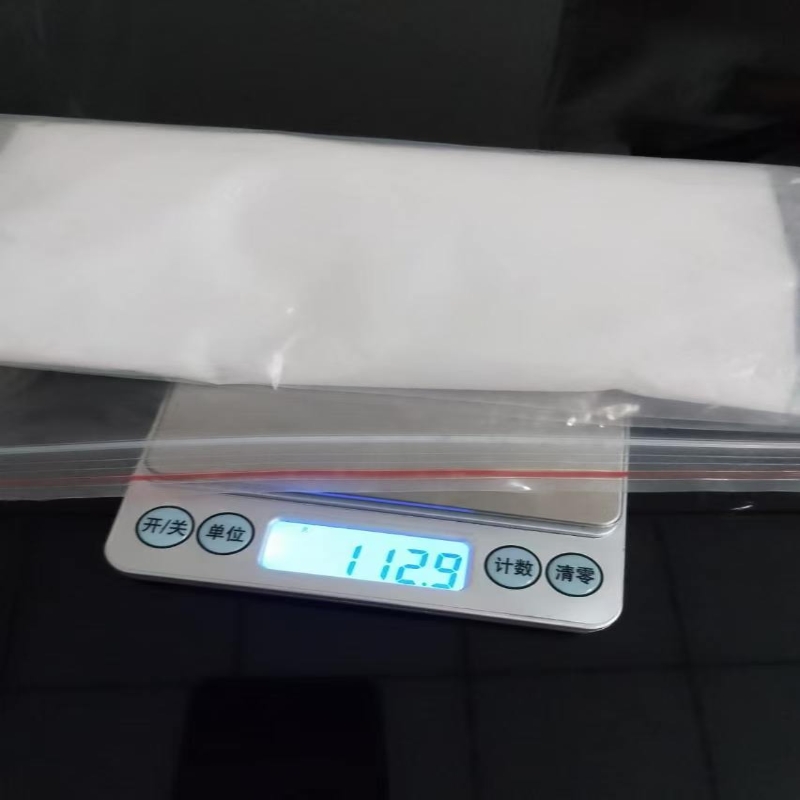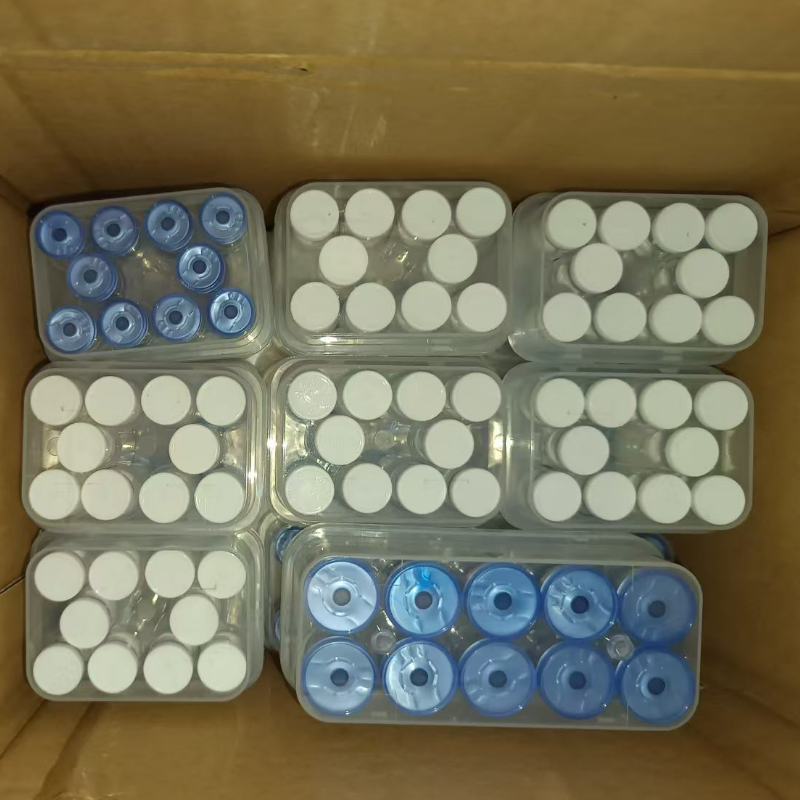-
Categories
-
Pharmaceutical Intermediates
-
Active Pharmaceutical Ingredients
-
Food Additives
- Industrial Coatings
- Agrochemicals
- Dyes and Pigments
- Surfactant
- Flavors and Fragrances
- Chemical Reagents
- Catalyst and Auxiliary
- Natural Products
- Inorganic Chemistry
-
Organic Chemistry
-
Biochemical Engineering
- Analytical Chemistry
-
Cosmetic Ingredient
- Water Treatment Chemical
-
Pharmaceutical Intermediates
Promotion
ECHEMI Mall
Wholesale
Weekly Price
Exhibition
News
-
Trade Service
Alan R.
Cohen, Department of Neurosurgery, Johns Hopkins University School of Medicine, and others reviewed the latest advances in the classification and treatment of brain tumors in children, published in The New England Journal of Medicine in May 2022
.
—Excerpted from the article chapter
【Ref: Cohen AR.
N Engl J Med.
2022 May 19; 386:1922-31.
doi: 10.
1056/NEJMra2116344.
】
Research background
Brain tumors are common solid tumors in children and the leading cause of
childhood cancer death.
Central nervous system (CNS) tumors account for 20% of childhood cancers, second only to leukemia
.
Recently, with the development of the diagnosis and treatment of central nervous system tumors, the survival and quality of life of many children have improved
.
However, the prognosis for brain tumors in children remains poor
.
Alan R.
Cohen, Department of Neurosurgery, Johns Hopkins University School of Medicine, and others reviewed the latest advances in the classification and treatment of brain tumors in children, published in The New England Journal of Medicine in May 2022
.
Research results
Brain tumors in children are classified as follows: 1.
Glioma (1) Diffuse low-grade glioma in children Low-grade glioma is the most common brain tumor
in children.
There is significant heterogeneity in this group of
tumors.
Unlike adults, low-grade gliomas in children rarely transform into higher-grade tumors; IDH1 or IDH2 mutant types, which are common in adults with low-grade gliomas, can transform into high-grade tumors; Less common
in children.
Surgery is the initial treatment for most pediatric low-grade gliomas to confirm the diagnosis and maximize safe resection
.
In a large international study, children with low-grade gliomas had a 5-year progression-free survival of 69% and a 5-year overall survival rate of 95%.
Risk factors for tumor progression are young age, incomplete resection, fibrous tissue features, and location in the hypothalamus or optic chiasm
.
Low-grade gliomas in children are often difficult to completely excision, especially deep in the
midline.
These tumors, some of which grow slowly, can be monitored regularly with imaging (Figure 1).
Radiotherapy is effective for recurrent or residual low-grade gliomas, with a 5-year progression-free survival of 71% and an overall survival of 93%.
Because radiation therapy kills developing brain nerves, adjuvant chemotherapy
must be used in children at risk of progression based on age, anatomic location, and genetic characteristics.
Chemotherapy drugs include vincristine, carboplatin, vinblastine, 6-thioguanine, procarbazine, lomustine, cisplatin, etoposide and irinotecan, etc.
, whether used alone or in combination
.
Figure 1.
MRI-T1-weighted enhanced scan of pediatric brain tumors shows heterogeneity in location, size, strength, and internal structure of pediatric brain tumors
.
Mitogen-activated protein kinase (MAPK) signaling pathways regulate gene expression through cell surface information transmission for a variety of cellular functions, including cell growth
.
Most low-grade gliomas have one or more MAPK pathway changes, including mutations or fusions of BRAF oncogenes, NF1 mutations, fibroblast growth factor receptor 1 mutations, and neurotrophic tyrosine receptor kinase (NTRK) family
fusions.
Studies have found that BRAF somatic alterations or NF1 germline alterations may play a role
in tumorigenesis.
Some low-grade gliomas have been found to have BRAF alterations, which encode a downstream regulator of the MAPK pathway, the serine threonine kinase protein (BRAF).
Two common changes in BRAF are a point mutation in the BRAF V600E oncogene and the fusion
of BRAF with another large gene of unknown function, KIAA1549.
BRAF inhibitors (dabrafenib) and downstream MEK inhibitors (trametinib and selumetinib) are being studied in depth
.
Low-grade gliomas in children with BRAF mutations, particularly those associated with homozygous deletion of the tumor suppressor gene CDKN2A, respond poorly
to conventional chemoradiotherapy.
BRAF inhibitors have shown initial results
.
(2) Hair cell astrocytoma
The most common form of childhood astrocytoma is hairy cell astrocytoma, which accounts for about 20%
of brain tumors in children, adolescents, and young adults (< 20 years of age).
<b11>The tumor grows slowly and has a 10-year survival rate of more than 90%.
Most tumors are located in the cerebellum and suprasellar area, but can also appear in other sites
.
Hairy cell astrocytoma rarely undergoes malignant transformation and generally has a good
prognosis.
However, 20% of patients have a poor prognosis, with local recurrence or dissemination
.
KIAA1549-BRAF fusion occurs in 80% to 90% of hairy cell astrocytomas, particularly astrocytomas in the posterior fossa, and may be associated with
longer overall survival.
(3) Diffuse high-grade glioma in children
High-grade gliomas in children account for 10% of brain tumors in children and have a poor
prognosis.
After surgery and adjuvant therapy, 70% to 90% of children die
within 2 years of diagnosis.
"Glioblastoma multiforme" is the most common primary malignant brain tumor in adults, which has been reclassified by the WHO CNS5 with emphasis on molecular markers
.
The new classification narrowly defines glioblastoma as a diffuse, IDH wild-type astrocytoma that occurs in adults and has specific histologic or molecular changes
.
As a result, the term "glioblastoma" has been removed
from childhood tumors.
One advance in the understanding of high-grade gliomas in children is the discovery of the driver mutation
of the chromatin rearrangement gene family histone H3.
In patients with diffuse midline or hemispherical glioma, somatic H3 tail mutations inhibit methylation and block its differentiation in the glial direction, promoting glioma formation
.
.
Because additional molecular changes were discovered, the previous "H3K27M mutation" has been replaced with the new term "H3K27 altered.
"
H3K27-altered tumors, including the previously named pontine diffuse endophytic glioma and invasive gliomas
involving the thalamus and other midline structures.
Studies of methylation in diffuse midline gliomas have identified oncogenic histone missense mutations in histone H3
.
These tumors have lower
survival rates compared to wild-type.
H3K27 changes are more predictive of prognosis than histological grading and are characteristic of diffuse midline high-grade
gliomas in children.
The second subtype is diffuse hemispherical glioma, the H3G34 mutant, which occurs in older children and young adults
.
The tumor is associated
with genetic alterations such as α-thalassaemia x-linked (ATRX), TP53 tumor protein 53 (TP53) mutations, and O6-methylguanine-DNA methyltransferase (MGMT) promoter methylation.
Histone alterations
have been found in more than 80% of midline high-grade gliomas and in more than 40% of gliomas in cerebral hemispheres, mainly children.
The third subtype, diffuse high-grade glioma in children, H3 wild type and IDH wild type, is an aggressive tumor that is common in the cerebral hemispheres and has a poor
prognosis.
The fourth subtype, a clinically distinct tumor that occurs in newborns and infants, is infantile hemispherical glioma, which typically contains tyrosine kinase receptor gene fusions, including ALK, NTRK1/2/3, ROS1, and MET4
.
These changes are therapeutic targets, and preliminary studies have found that kinase fusion-positive tumors have better
efficacy.
The standard adjuvant treatment for diffuse high-grade gliomas in children is focal palliative radiotherapy, but long-term survival is low and has not improved significantly over the past 50 years, with 3-year event-free survival and overall survival of 10% and 20%,
respectively.
The prognosis for diffuse midline gliomas of the pontine brain is extremely poor, with a median survival of 4 months in patients without radiotherapy and only 8 to 11 months
in patients treated with radiotherapy.
Targeted therapy for high-grade gliomas in children has entered clinical use, but has not shown significant efficacy
.
Overall efficacy of chemotherapy is limited
.
Temozolomide improves event-free and overall survival compared with radiotherapy alone in adults with high-grade gliomas, but not
in children.
A phase 2 study added lomustine to temozolomide, which had better
event-free and overall survival compared with temozolomide alone.
H3K27 mutations
can be targeted with histone deacetylase (HDAC) inhibitors.
Fimepinostat, a pan-HDAC and PI3K inhibitor, is being used in a Phase 1 trial
involving high-grade gliomas and recurrent medulloblastomas.
Other treatments under study include immune checkpoint inhibitors, chimeric antigen receptor T cell therapy, cancer vaccines, and oncolytic virus therapy
.
2.
Ependymal tumors
Epenendymoma is the third most common brain tumor in children, after glioma and medulloblastoma, accounting for 5%-10% of children's central nervous system tumors; 90% are intracranial, most originating in the posterior fossa and the rest in the spinal cord
.
ependymas are heterogeneous; Classified by histology, molecular characteristics, and location, there are at least 9 molecular subtypes
.
The previous WHO histological classification had poor correlation with prognosis and has been modified
.
Ependymomas are graded 1, 2, or 3 depending on the degree of variation, rare subependymalomas are grade 1, and mucinous papillary ependymomas, once classified as grade 1, are now classified as grade 2 because the likelihood of recurrence is similar
to that of conventional spinal ependymomas.
Grade 2 and 3 ependymomas may be located in either supratentorial or subcurinary
.
Supratentorial ependymomas are classified
according to the fusion of two carcinogenic molecules.
C11orf95-RELA fusion occurs in 70%, resulting in constitutive activation
of the nuclear kappa B signaling pathway.
The new name of the C11orf95 gene is ZFTA; ZFTA may fuse with more ligands than just RELA
.
Another fusion involves YAP1
.
Compared with the YAP1 fusion, the newly named ZFTA fusion has been reported to be superior to histological classification in predicting clinical course, predicting a poorer
prognosis.
Based on methylomics analysis, posterior fossa ependymoma is subdivided into two common subtypes: PFA and PFB ependymoma
.
The former occurs mainly in infants, is located laterally, and has a worse
prognosis than PFB ependymoma.
Compared with PFB tumors, the H3K27 trimethylation epigenetic marker of PFA tumors is relatively absent
.
PFB subtypes are more common in older children and generally have a better
prognosis.
Initial treatment for non-metastatic ependymoma in children is maximal safe resection, followed by focal conformal radiotherapy
.
Infants are not candidates for radiation therapy
.
The role of chemotherapy is unclear
.
The long-term prognosis for children with ependymoma remains poor, with 10-year overall and progression-free survival rates of 50% and 30%,
respectively.
Central nervous system embryonic tumors Embryonal tumors are also a group of heterogeneous malignant central nervous system tumors, mainly affecting young children, accounting for about 20%
of children's brain tumors.
Tumors are composed of small, round, dense blue-stained cells with sparse cytoplasm and varying degrees of differentiation, and were originally classified as primitive neuroepithelial tumors (PNETs).
Occurring in the posterior cranial fossa is called medulloblastoma, in the pineal region is called pineal blastoma, and occurs in the supratentorial area as supratentorial PNETs
.
According to WHO CNS5, embryonic tumors are divided into two categories
: medulloblastoma and other CNS embryonal tumors.
(1) Medulloblastoma and its subtypes Medulloblastoma The most common brain tumor in children is low-grade glioma; Medulloblastoma is the most common malignant brain tumor
in children.
They usually originate in the cerebellum, and patients present with increased intracranial pressure or cerebellar dysfunction
.
Medulloblastoma accounts for more than 60% of childhood embryonic tumors, 70% of which occur in children under 10 years of age, with a higher incidence in boys than girls
.
However, depending on the tumor subtype, the age and sex differences vary
.
One third of cases occur in children under three years of age
.
Factors associated with poor prognosis in children with medulloblastoma include large tumor size, spread at onset, young age (< 3 years), and postoperative imaging of tumor residue greater than 1.
5 cm²<b20>.
Previous morphological classifications identified four subtypes: classic medulloblastoma, large cell intervariant medulloblastoma, connective tissue proliferative nodular medulloblastoma, and extensive nodular medulloblastoma
.
The latter two types have a relatively good
prognosis.
The two types of medulloblastoma recognized by the CNS5 system are molecularly defined medulloblastoma and histologically defined medulloblastoma
.
Molecularly defined medulloblastoma includes four subtypes, each with unique methylation and transcriptome characteristics and unique clinical behaviors
.
Genetic analysis has identified subclasses of subtypes and proposed new treatment strategies
.
WNT-activated medulloblastoma WNT-activated type accounts for 10% of all medulloblastomas and occurs equally in men and women, occurring in older children or adolescents
.
The tumor is located in the midline of the cerebellum and sometimes affects the brainstem
.
WNT type medulloblastoma has typical histologic features and is often associated with
the accumulation of CTNNB1-encoded β-caten.
CTNNB1 mutations are present in 90% of cases, leading to the accumulation of nuclear β-catenin and promoting tumorigenesis
.
The prognosis of such tumors is better, with a 10-year event-free survival rate of more than 95%.
SHH-activated medulloblastoma SHH-activated type accounts for 30% of medulloblastoma and affects young children and young adults
.
They are usually located in the cerebellar hemisphere and are thought to originate as precursors
of the extracerebellar granule cell layer.
SHH medulloblastoma is more biologically and clinically heterogeneous
than WNT medulloblastoma.
They typically result from germline or somatic alterations of the SHH-PTCH-SMOO-GLI signaling pathway, including deletion or loss-of-function mutations in the tumor suppressor gene PTCH1 (43% of cases), activating mutations in the proto-oncogene SMO (9%), and amplification of oncogenes GLI1 and GLI2 (9%)
.
SHH medulloblastoma is stratified
according to the presence or deletion of the TP53 tumor suppressor gene.
TP53 mutations (occurring in 9% of cases) are drivers of tumorigenesis and have a poor prognosis, while TP53 mutations in WNT tumors do not affect outcomes
.
TERT promoter mutations affect the maintenance of telomere structure and occur in 40% of SHH medulloblastomas and are present in
almost all adult cases.
The molecular typing of SHH medulloblastoma has prompted clinical trials of targeted therapies, and new SMO inhibitors vismodegib and sonidegib are being studied
for the treatment of refractory or relapsed SHH medulloblastoma.
Non-WNT, non-SHH medulloblastoma In the current nomenclature, non-WNT, non-SHH subtypes include group 3 and group 4 medulloblastomas
.
Unlike WNT and SHH medulloblastoma, these tumors occur more often in boys than girls and often have metastases
at initial diagnosis.
Tumors are located in the midline of the cerebellum and usually have typical or macrocellular anaplastic histologic features
.
Potential driver gene mutations have not been identified
.
Group 3 tumors, which account for 25% of medulloblastomas, occur in infants and children and have the worst prognosis, with a 5-year overall survival rate of 50%.
Group 4 tumors are the most common, accounting for 35%
of all medulloblastomas.
Occurs in older children and adolescents; The prognosis is moderate, with a 5-year overall survival rate of 70%.
Genetic alterations include amplification of MYCN oncogenes (6% of cases) and CDK6 (5%-10% of cases
).
Like group 3 medulloblastomas, these tumors have a variety of chromosomal aberrations
.
It can be divided into high-risk groups enriched with 17q chromosomes, with a 10-year overall survival rate of 36%, while low-risk groups with chromosome 11 deletion and MYCN amplification have a 10-year overall survival rate of 72%, twice that
of high-risk groups.
Treatment of medulloblastoma includes radiotherapy and chemotherapy
after maximum safe resection.
Current research focuses include down-to-level treatment for WNT medulloblastoma to reduce the toxicity of cerebrospinal cord radiotherapy and chemotherapy; Targeted therapy for SMO and its downstream pathways for SHH medulloblastoma and risk stratification therapy
for non-WNT and non-SHH medulloblastoma.
(2) Other central nervous system embryonic tumors Other central nervous system embryonic tumors, including atypical teratomiform rhabdomyomas, embryonic tumors with multiple layers of chrysanthemums, central nervous system neuroblastoma (FOXR2 activated type), and central nervous system tumors
with repeated tandem within the BCOR gene.
Conclusion of the study
In summary, gene sequencing and DNA methylomics analysis have dramatically changed the classification of brain tumors in
children.
Advances in surgery and adjuvant therapy have improved the outcomes of some tumors, but to date, molecular diagnostics have had a limited
impact on treatment progression.
Targeted therapy is expected to improve tumor prognosis and reduce adverse effects
of treatment.







